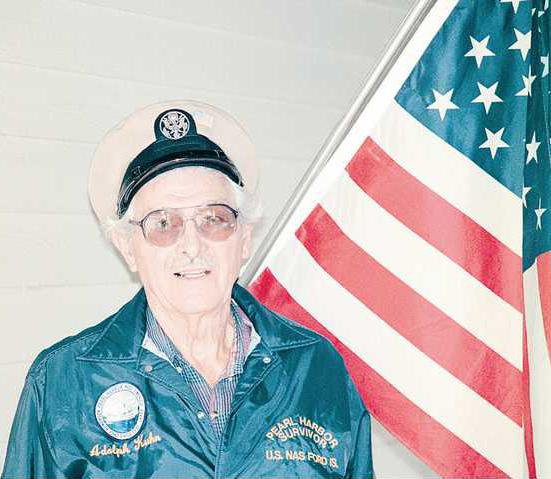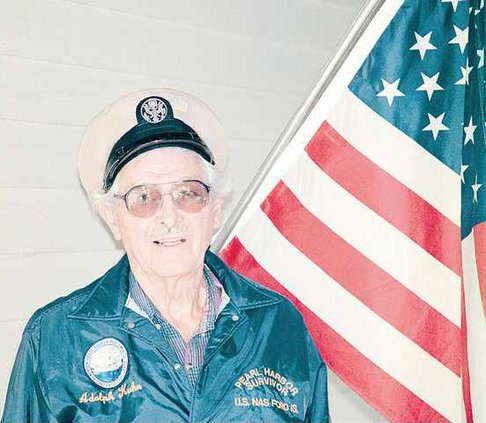The hottest commodity in Honolulu on Wednesday wasn’t a rock star or the latest high tech gadget.
It was a former farm boy from Kansas and 120 other men whose acts of bravery still resonate on the American consciousness.
Everywhere they went in Honolulu people thanked them, asked for their autograph and took pictures. They were the 100 of the remaining 7,000 survivors of the attack on Pearl Harbor on Dec. 7, 1941.
The Kansas farm boy was former Manteca resident Adolph Kuhn who now resides in Oceanside.
Kuhn was among three Pearl Harbor survivors who spoke at programs Monday and Tuesday and then were honored with 120 of their comrades at ceremonies on Wednesday exactly 70 years after the attack described by President Franklin D. Roosevelt as “a day that will live in infamy.”
“It’s all vivid in my mind,” Kuhn said of that fateful day. “I speak at schools and at college classes all the time and I never use notes.”
Kuhn was a metal smith assigned to Ford Island naval base when the attack took place at 7:55 in the morning. He was actually on overnight leave in Honolulu and was getting ready to go to church when the attack started.
He remembered running outside and jumping into a tumble seat of a Model A Ford carrying two other sailors to head back to the base.
They were dodging bullets from Japanese planes as they scrambled to the boat landing only to find the docks ablaze and parts of the harbor on fire from burning oil. Kuhn along with 11 other sailors saw a small fishing boat just a bit off shore. They waded through the water and got into it determined to reach the places they were responsible for at the naval air station.
Bullets struck the boat’s floorboard causing it to sink and dumping the sailors in the water.
Kuhn remembers he started dog paddling as he couldn’t really swim. Along the way he found debris to help him stay afloat by clinging to it and then letting go until he reached shore. The debris was from ships as well as dismembered bodies of fellow sailors and Marines.
By some chance he reached the submerged farthest extension of the concrete boat ramp used for launching seaplanes off Ford Island Base. Just as he reached it he recalled hearing the whistle of torpedoes heading toward targets in Battleship Row.
When the torpedoes hit the sides of the ships, Kuhn said they leapt out of the water like a big whale breeching. He could hear the screeching of bulkheads being torn apart while seeing the bodies of sailors flying out into the burning oil-coated water.
There were 2,390 casualties that day.
Kuhn and others made it to the island where they treaded valiantly to move planes out of the line of fire by pulling them with tractors. Kuhn and others were then enlisted by officers in a futile attempt to try to pull survivors from the nearby sinking Arizona.
Kuhn has published his memoirs in a book entitled “Adolph Kuhn: An American Journey” (Create Space 2010). It is based upon Kuhn’s personal interviews, his poignant poetry, short stories, and daily diary entries dating back to 1939.
Kuhn among survivors marking 70th anniversary





